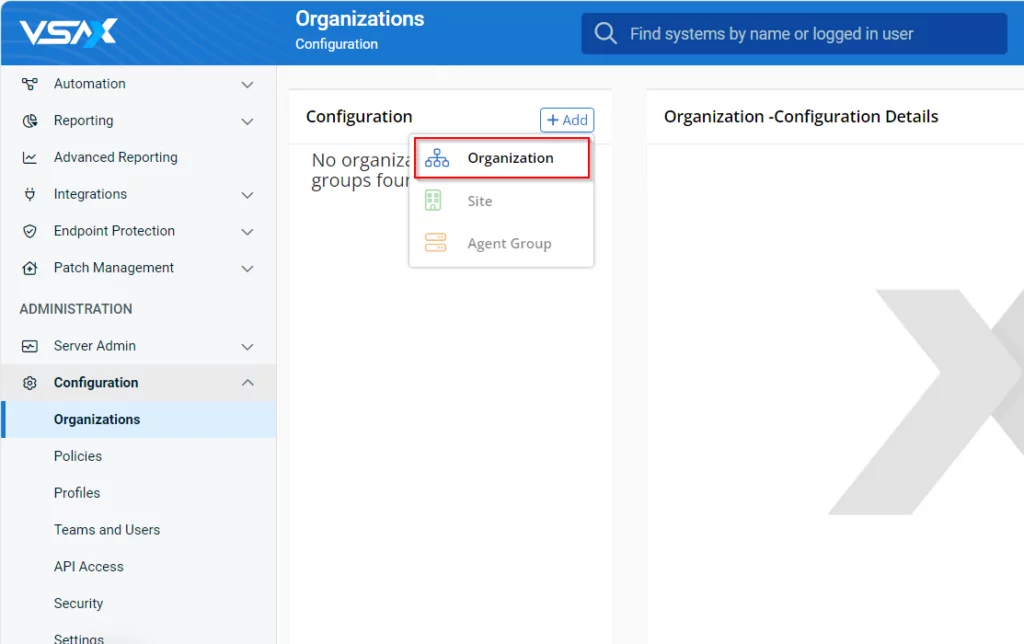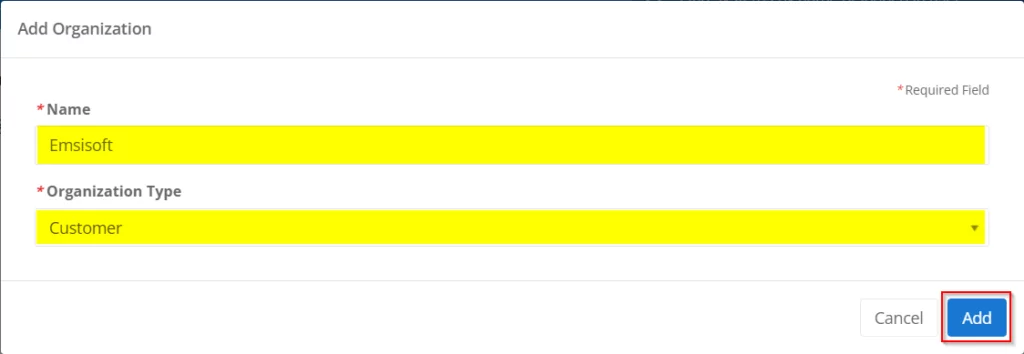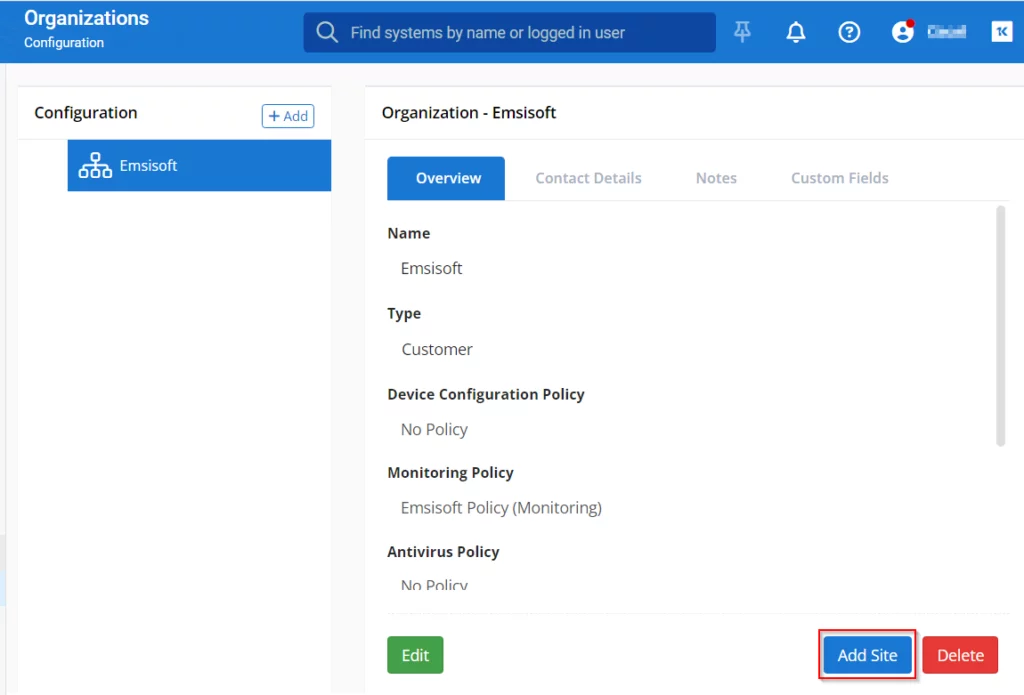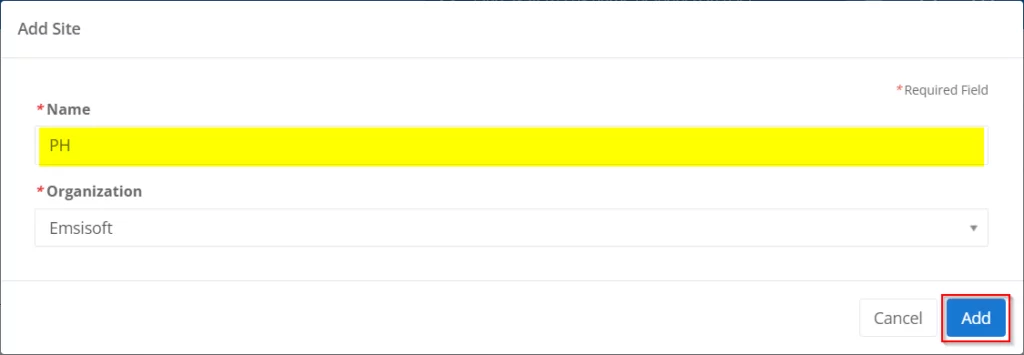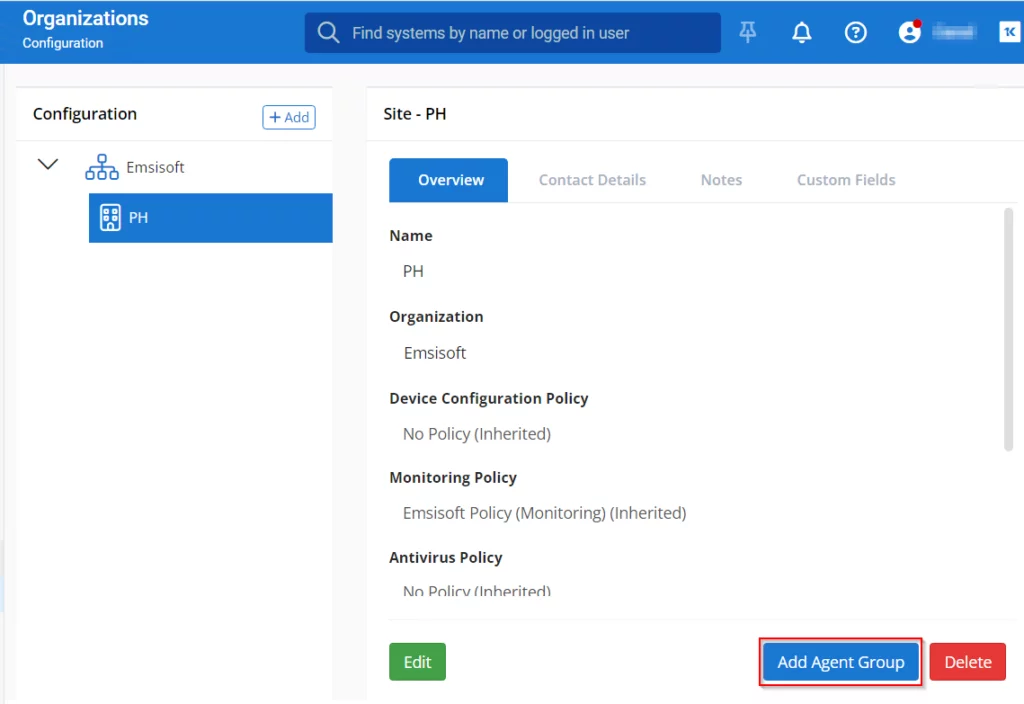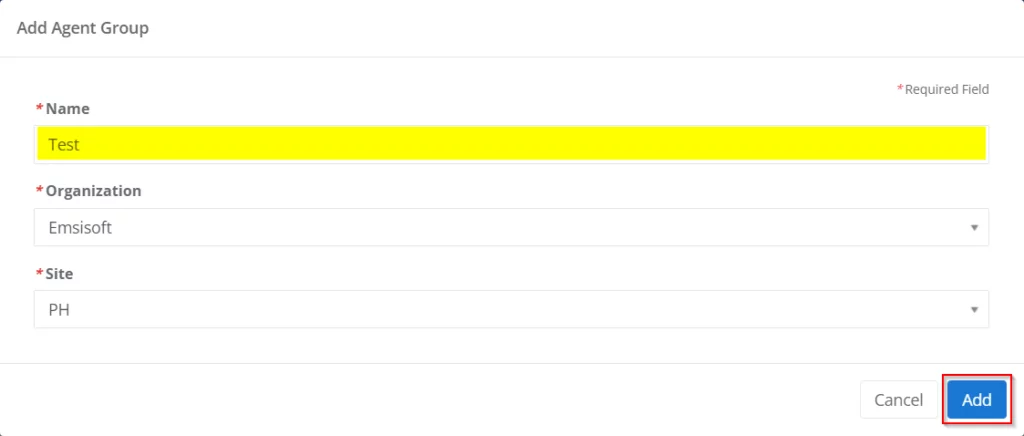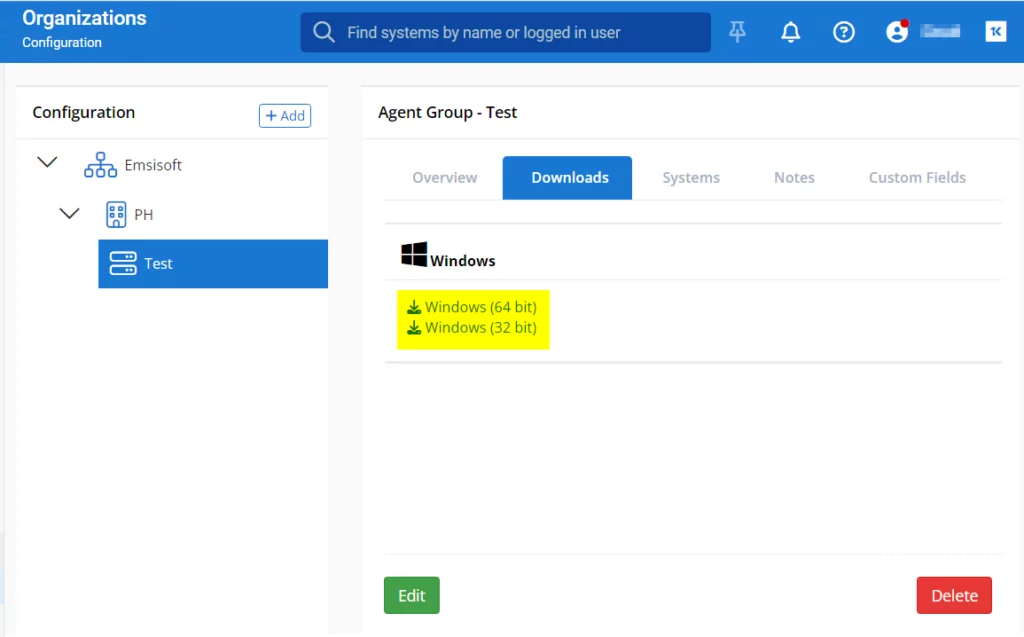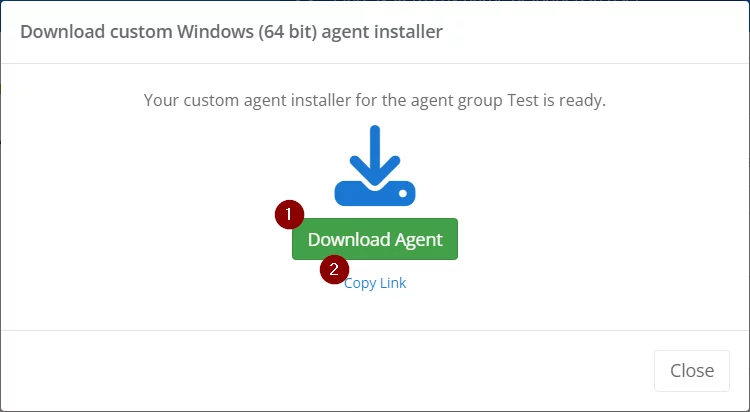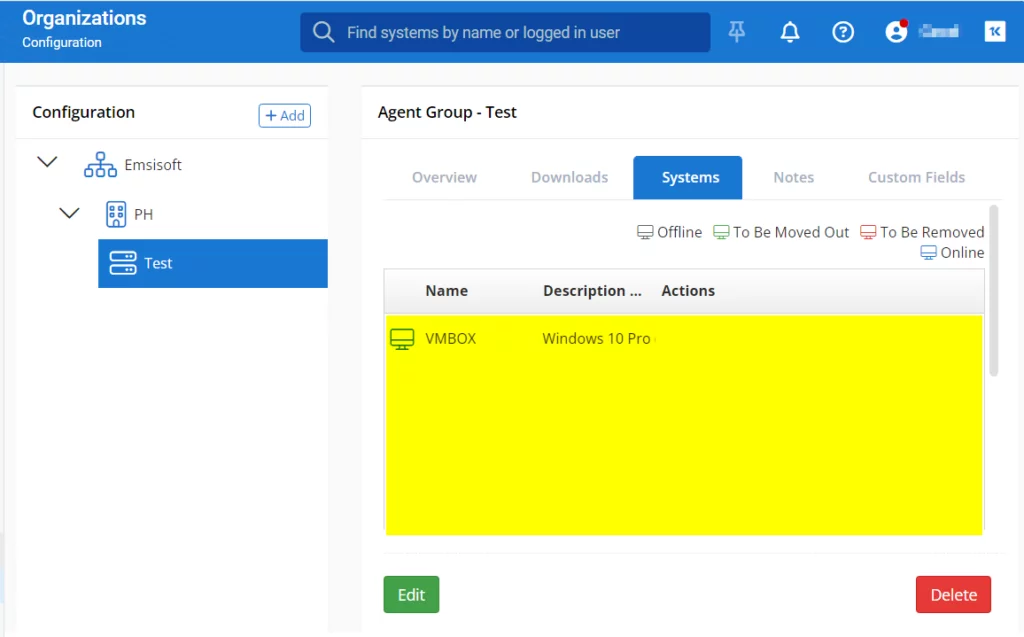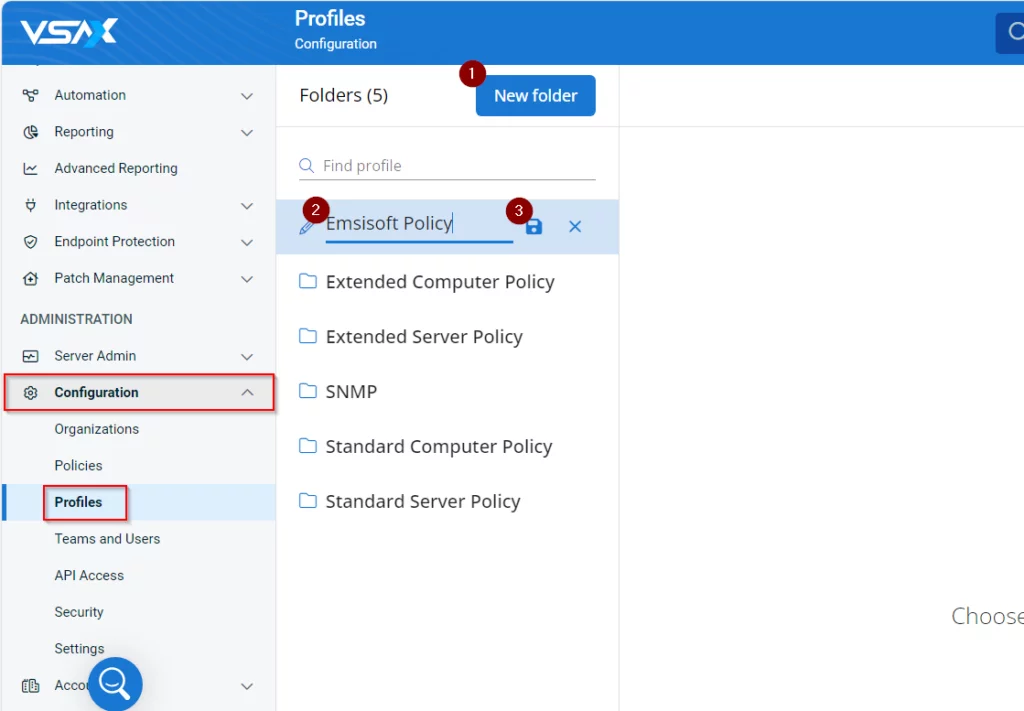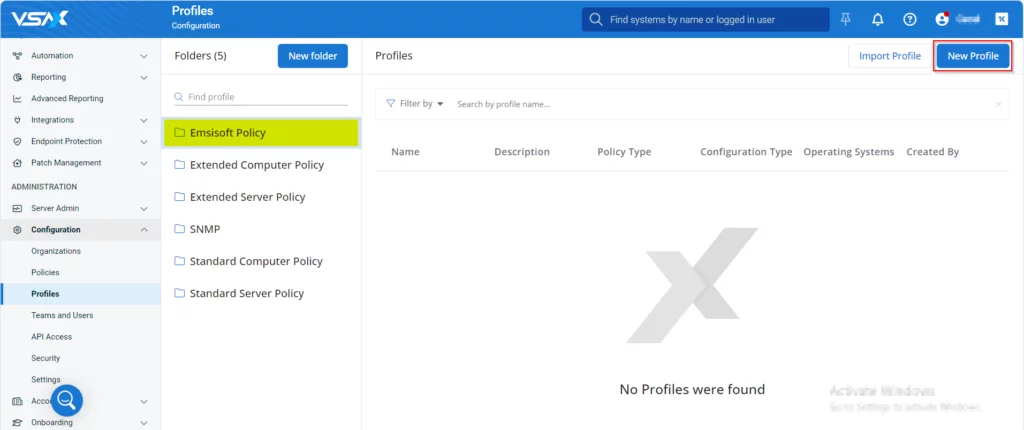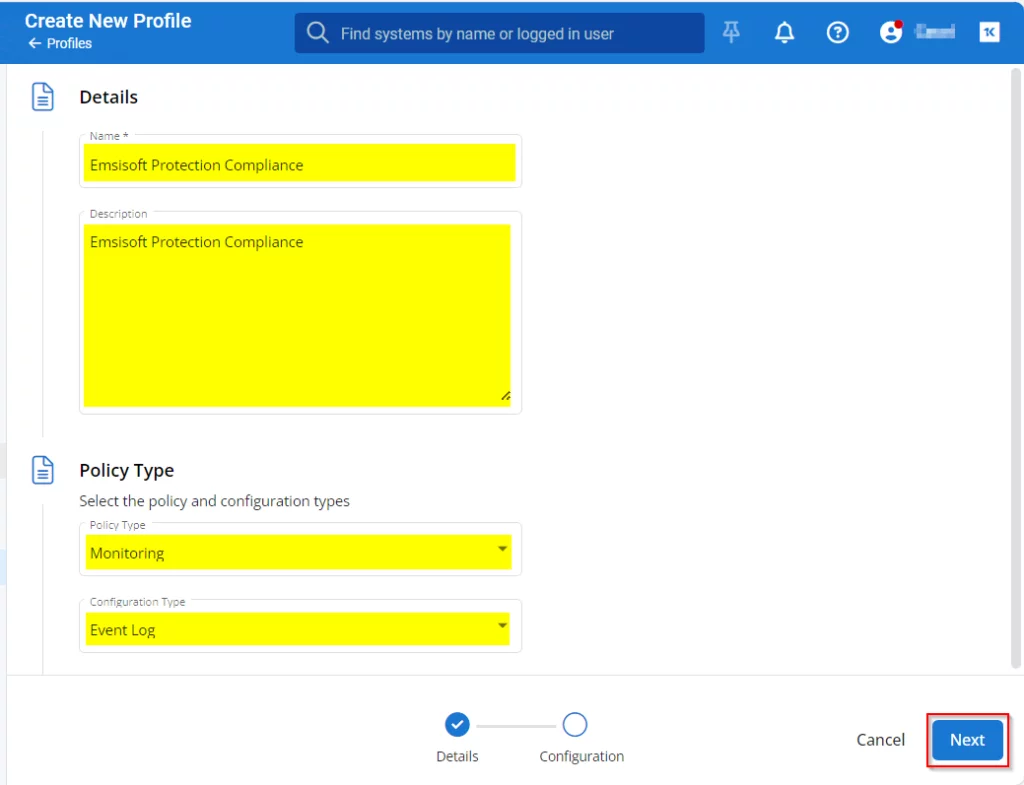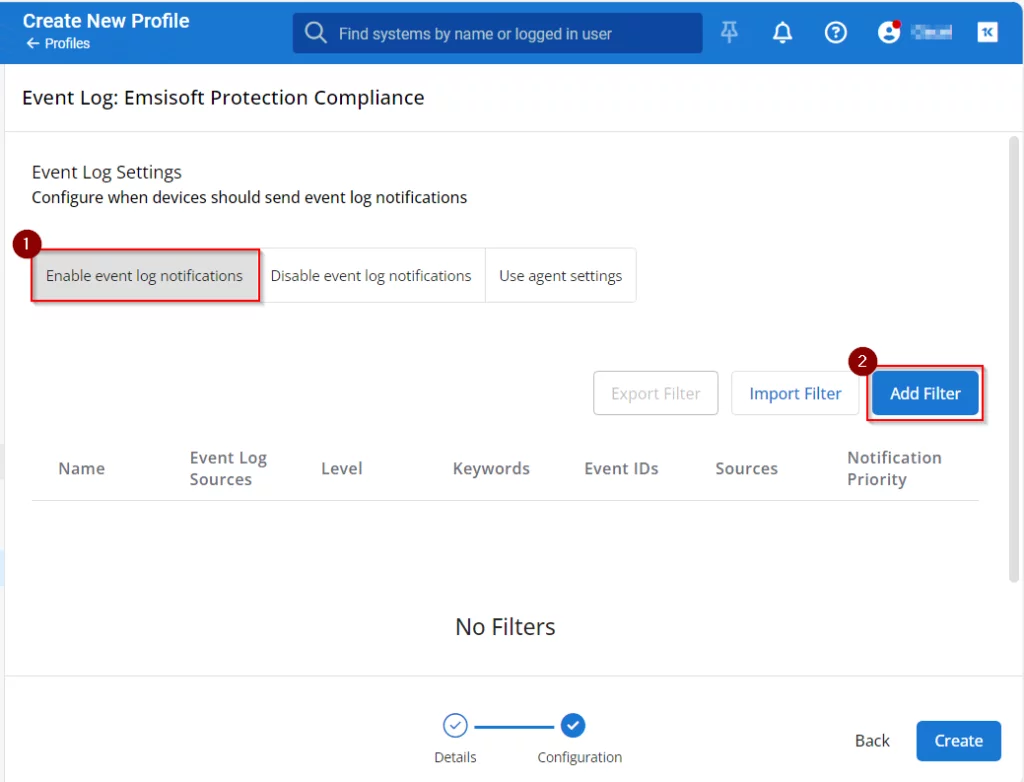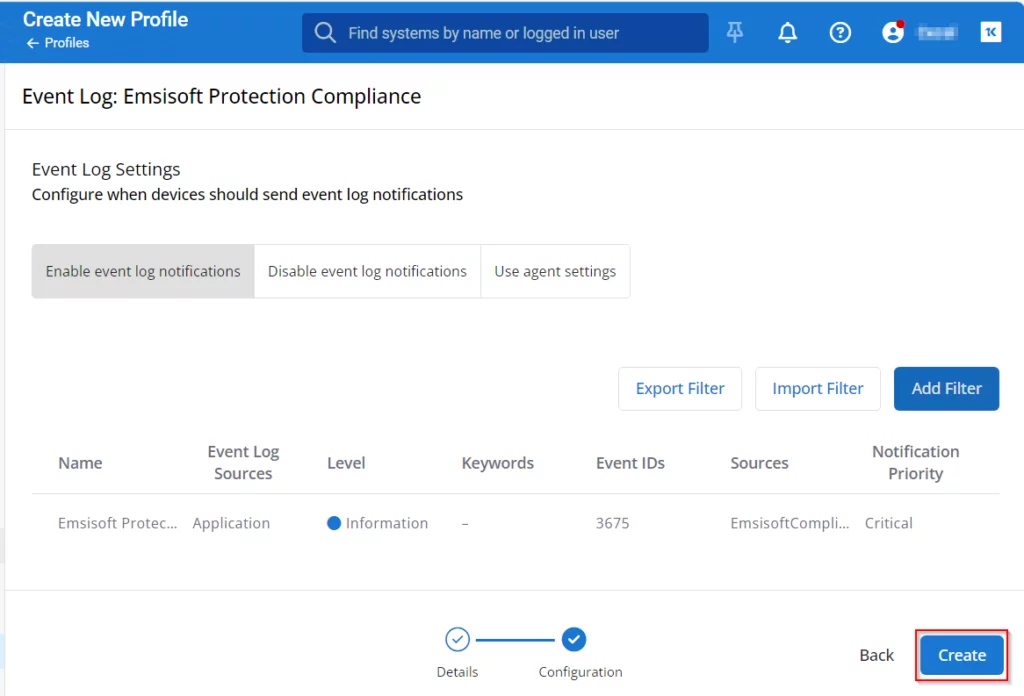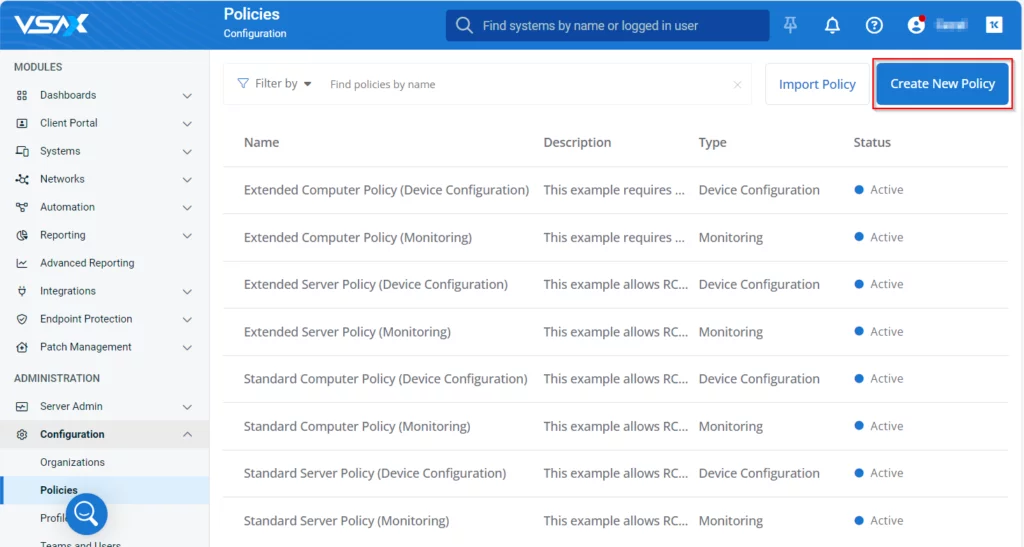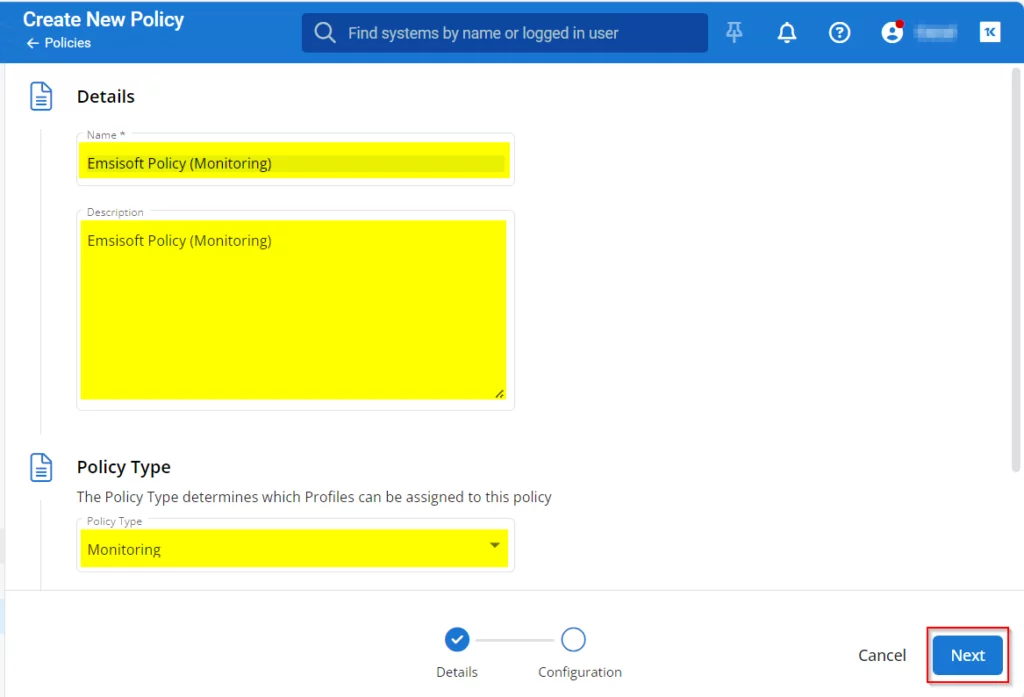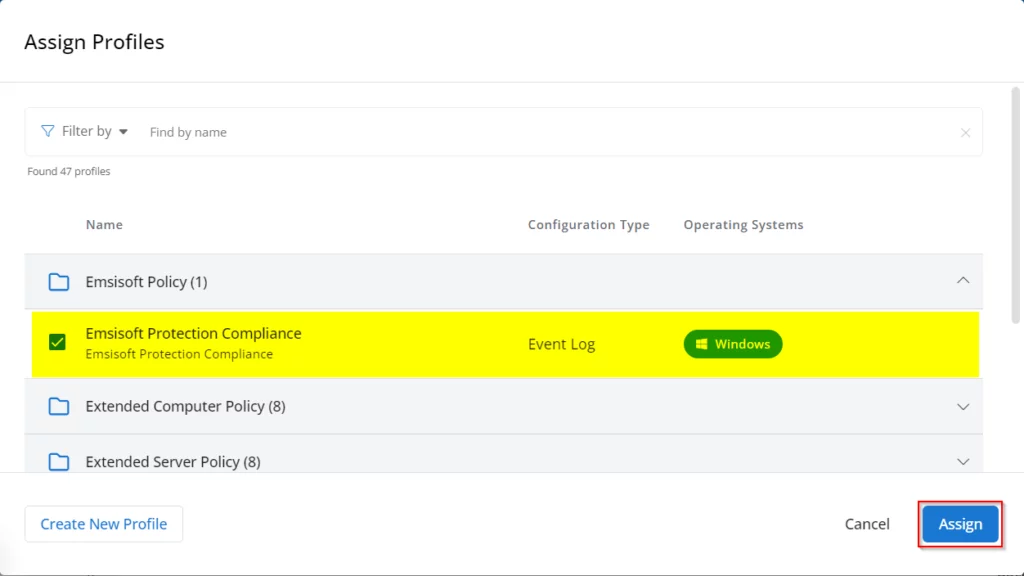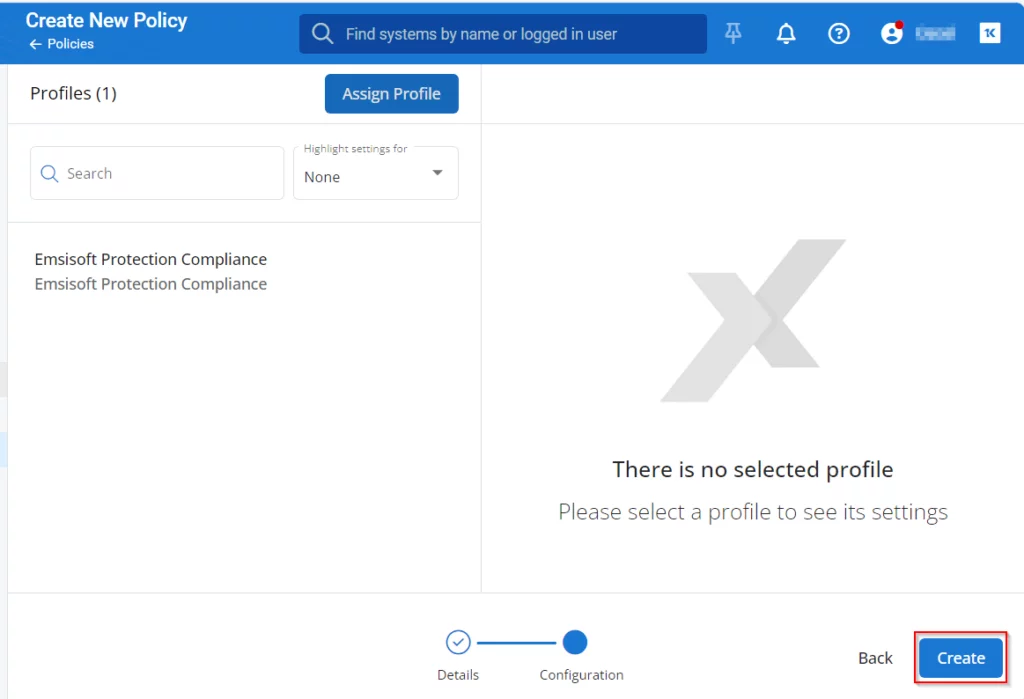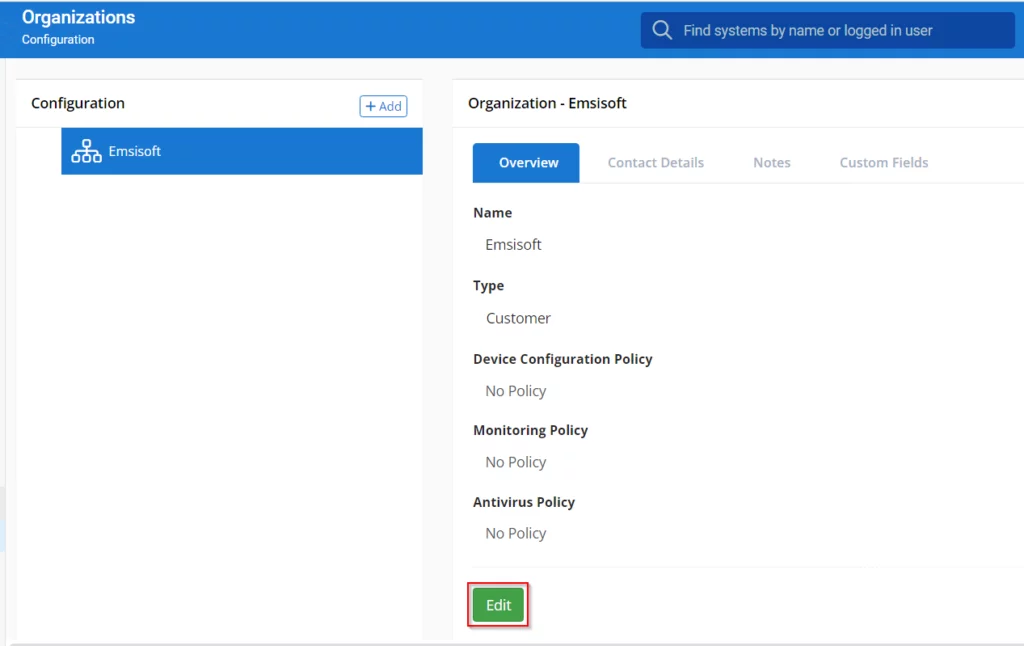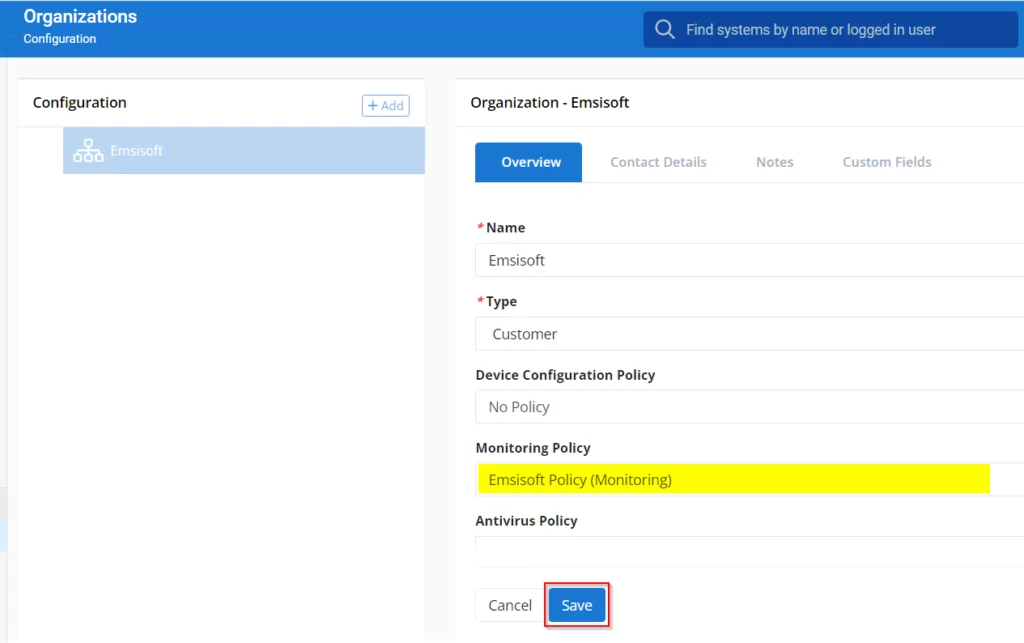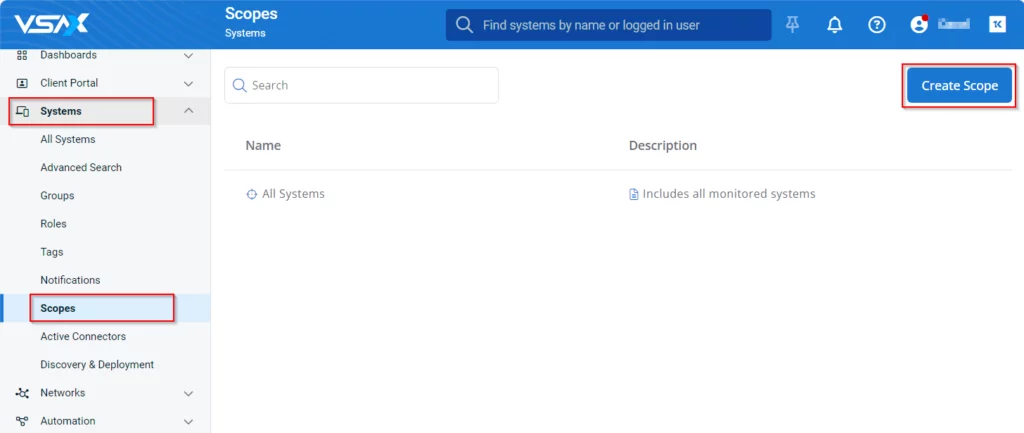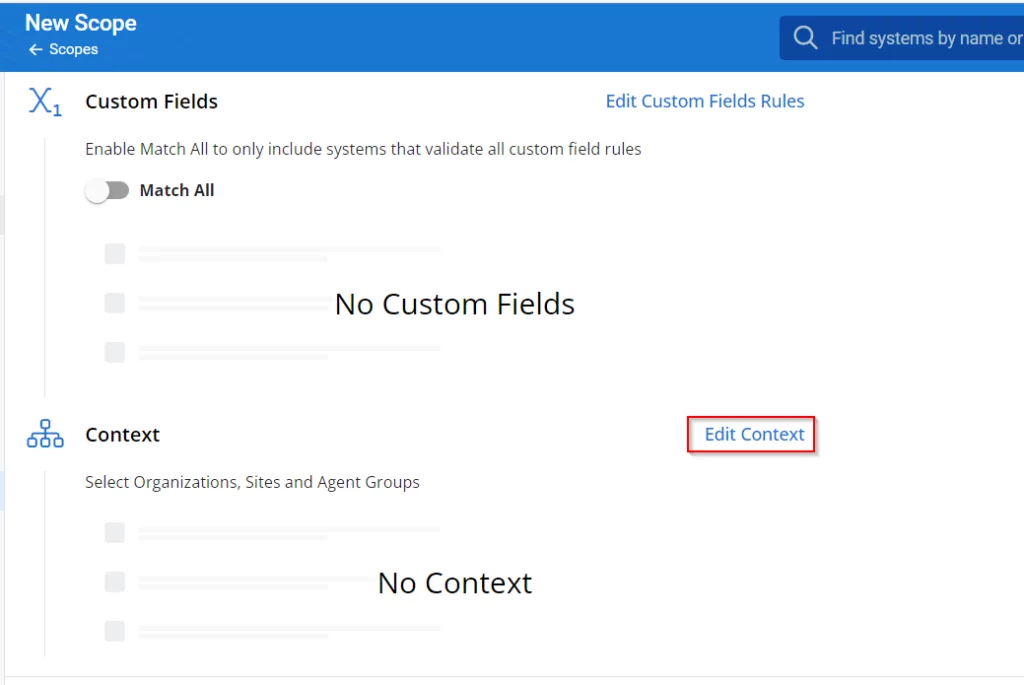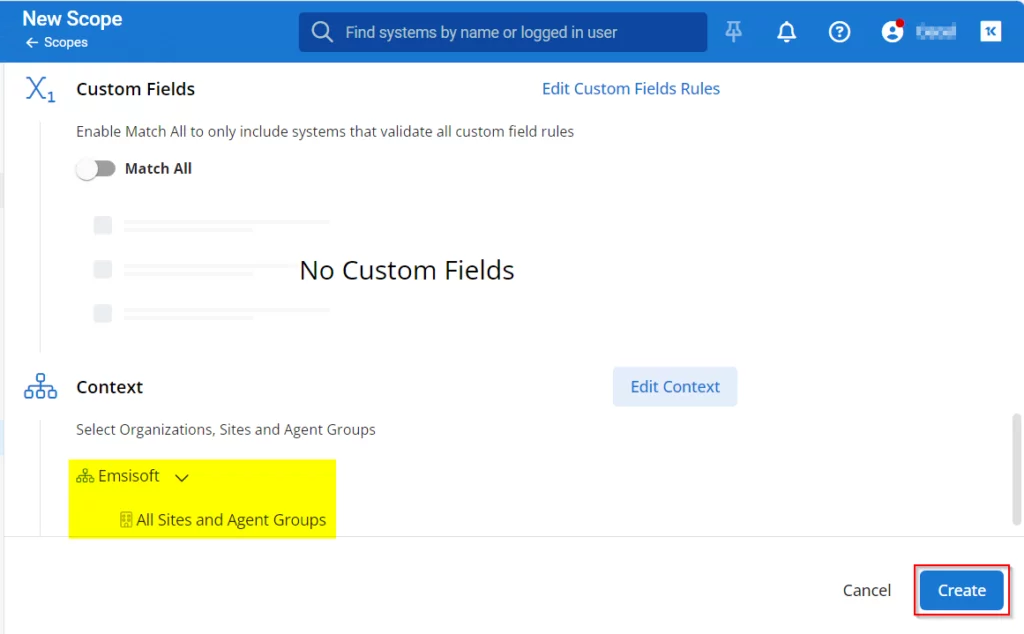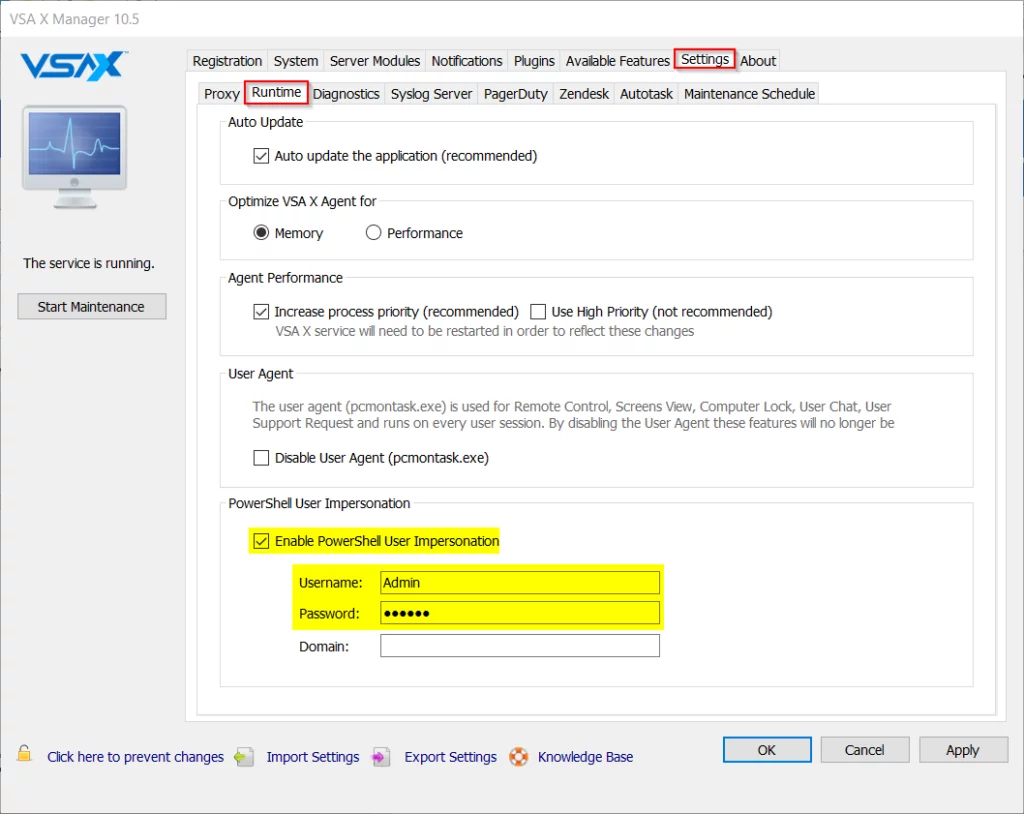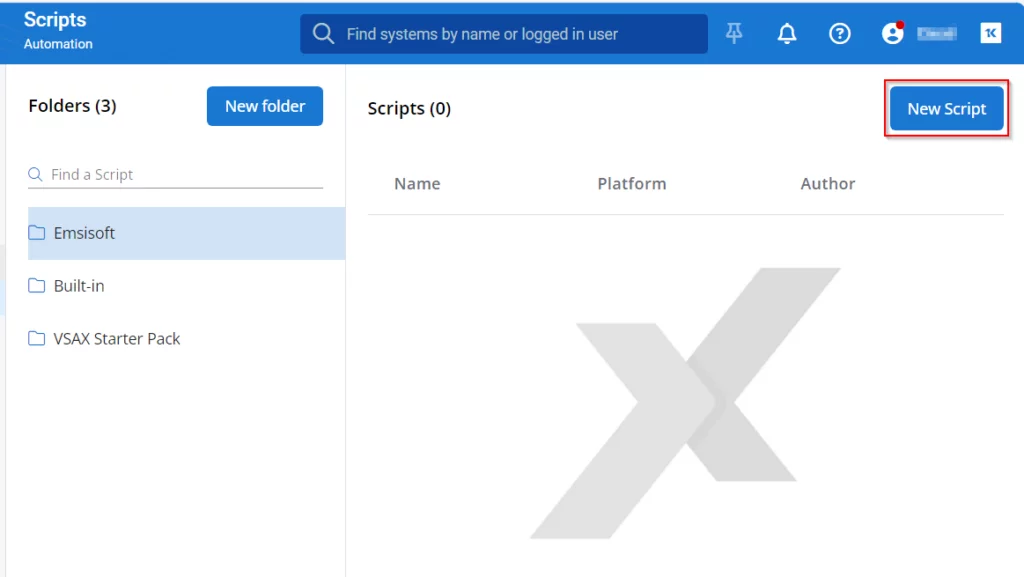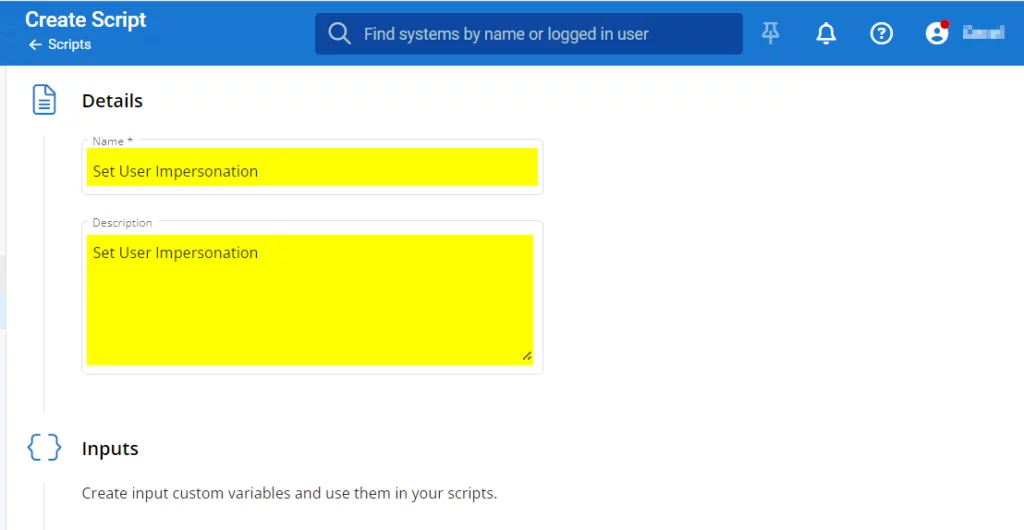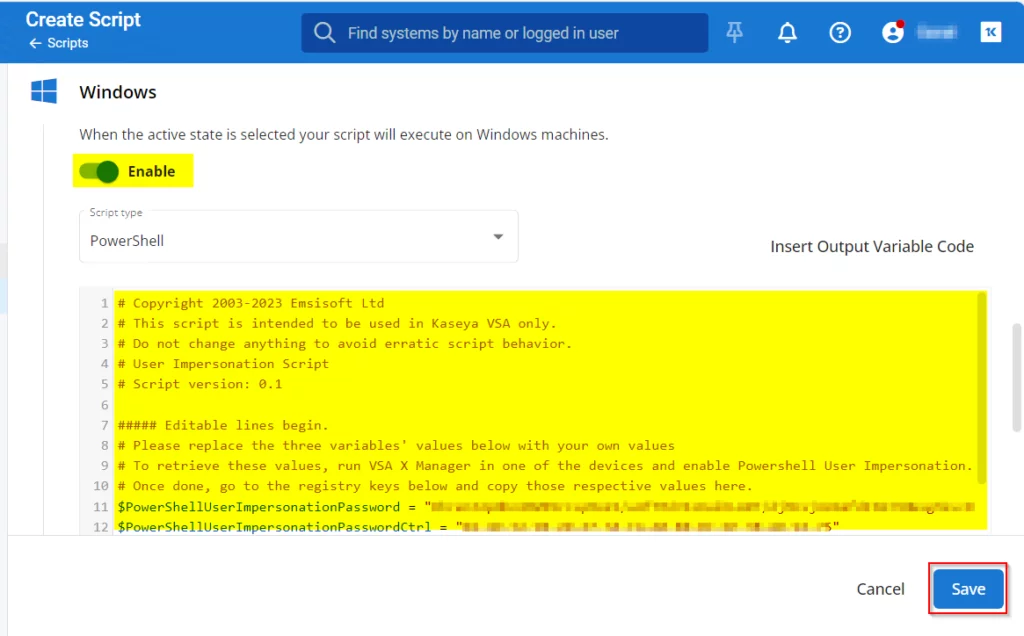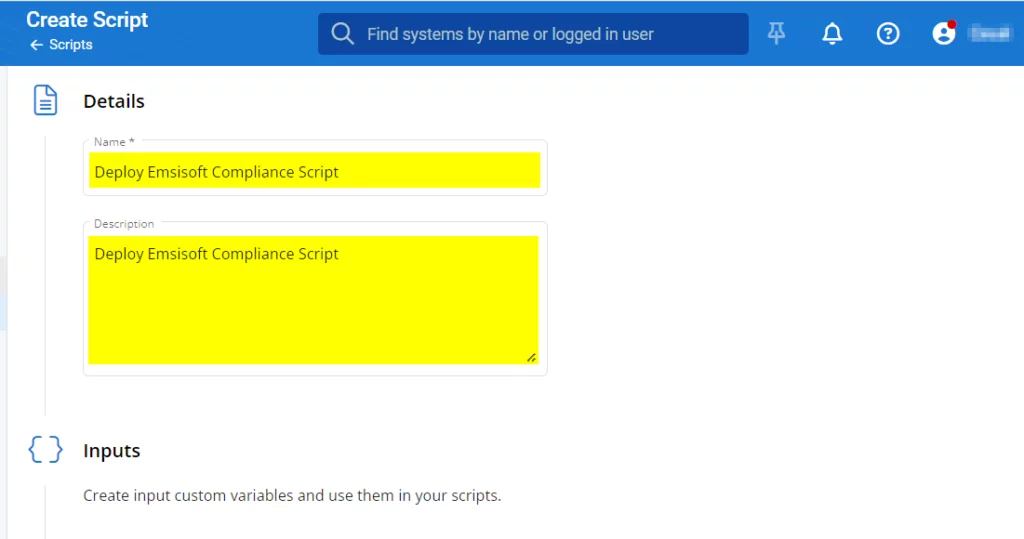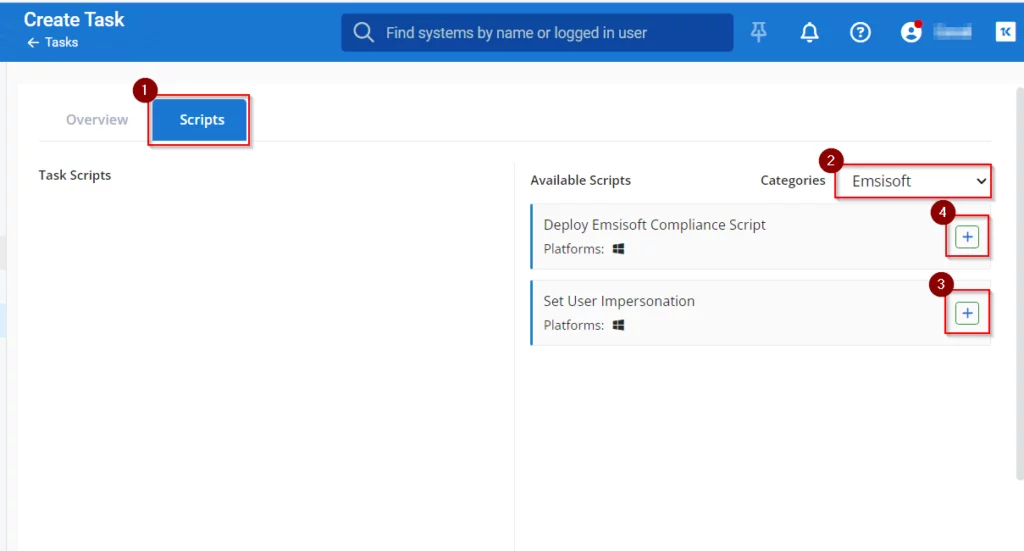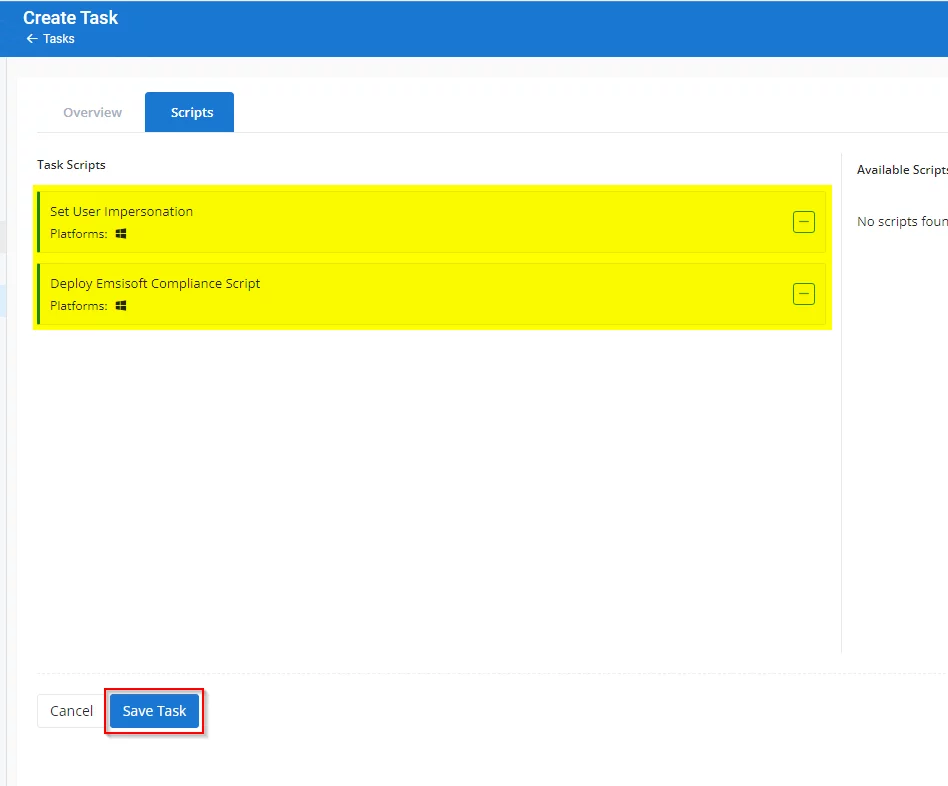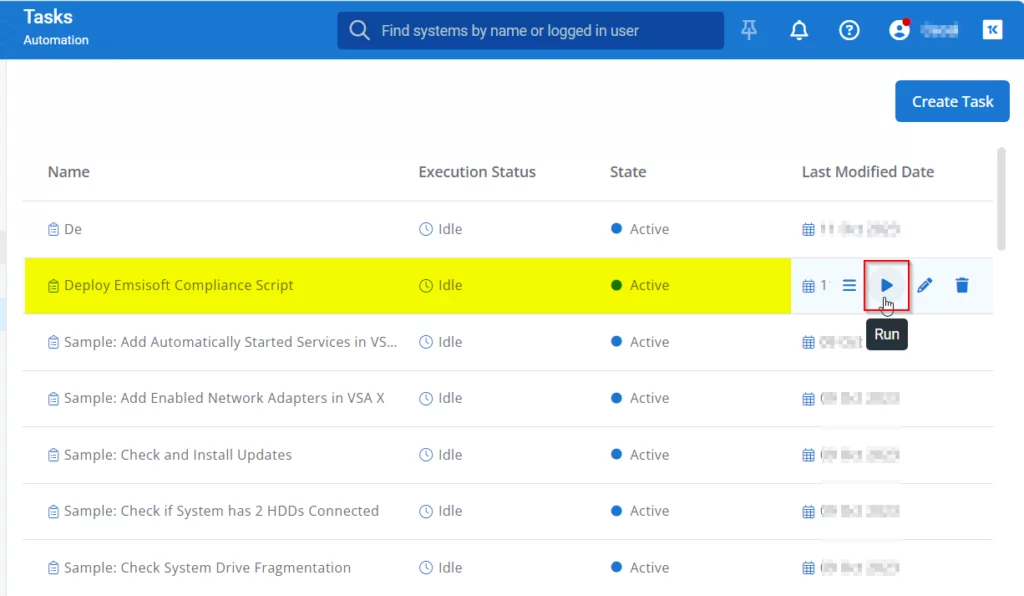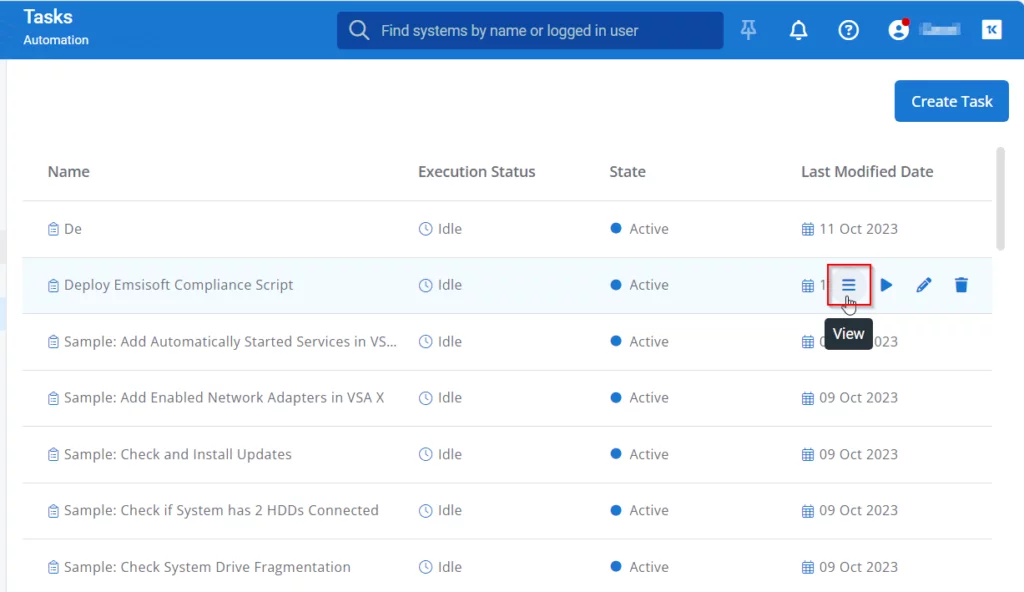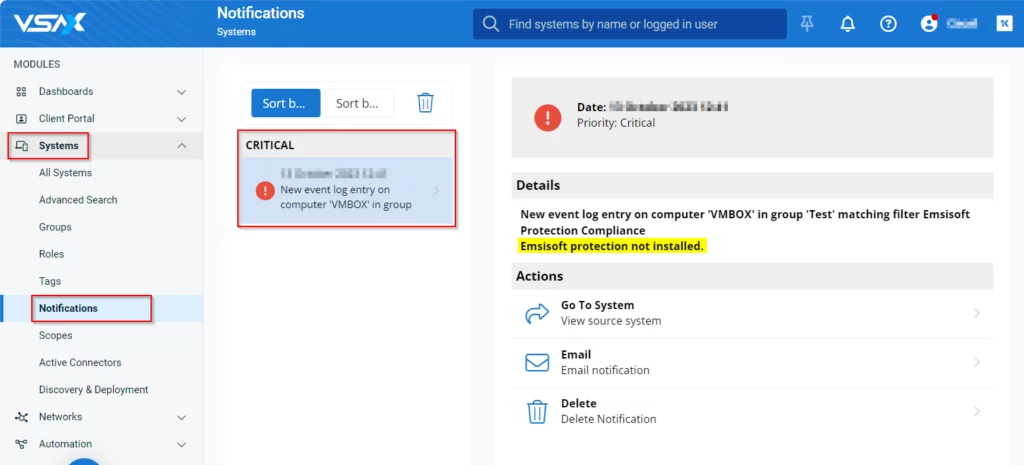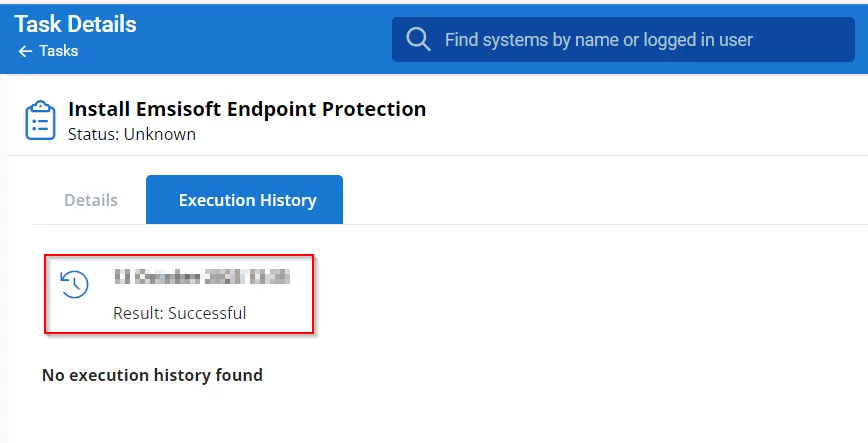Kaseya VSA Integration
Kaseya Virtual System Administrator (VSA) is a cloud-based Remote Monitoring and Management software. Specifically designed for use by IT teams and Managed Service Providers, it unifies the monitoring of system infrastructure and their endpoints.
Here you have a step-by-step guide to help integrate it with your Emsisoft Endpoint Protection:
Configuring organizations and adding devices
- Go to Configuration > Organizations. Click the Add button then select Organization.
- In the Add Organization form, input the name of the organization and the organization type. Click Add once done.
- After adding the organization, click the Add Site button to add a site under our Emsisoft organization.
- Input the site name then click the Add button to add the site.
- After adding the site, you can now add an agent group under it. Click on the Add Agent Group button to do this.
- In the Add Agent Group window, enter the agent group name (in our example “Test”) then click Add.
- After successfully creating the agent group, select it and on the left side tab select Downloads. Choose the OS that’s appropriate for your device that you will be adding.
- Once you are in the download agent installer form, you have two options to download the agent installer. You can choose to download it directly or copy the download link.
- After downloading and installing the agent in the target machine, the device will now appear in the Systems tab.
Creating profile
- Go to Configuration > Profiles then click the New Folder button. In the new folder’s name field enter Emsisoft Policy then click the save button next to it.
- Once the folder is created, select it then click on the New Profile button.
- In the details page of the new profile, input the Name, Description, Policy Type and Configuration Type as shown in the screenshot below. Click the Next button to go to the profile Configuration page.
- In the configuration page, select the Enable event log notifications tab then click on the Add Filter button.
- Fill-in the Add Event Log Filter form with data as shown in the screenshot below. Click the Save button once done.
- Click Create to create the new profile.
Creating Policy
- Go to Configuration > Policies then click on the Create New Policy button.
- In the Create New Policy details page, fill in the data as shown in the screenshot below. Click on the Next button once done.
- In the policy’s Configuration page, click the Assign Profile button.
- In the Assign Profiles form, select from the list the newly created Emsisoft Protection Compliance profile then click Assign.
- After assigning the profile click the Create button to create the new policy.
- After you have created the Emsisoft policy, you can now assign this to the Emsisoft organization. Go back to the organizations list (Configuration > Organizations), then select Emsisoft. Click the Edit button to update the organization details.
- Update the Monitoring Policy and set it to the newly created Emsisoft policy. Click the Save button once done.
Creating a scope
- Before moving to the scripts, we need to create a scope for our tasks that will execute our script. Go to Scopes under Systems and click Create Scope.
- In the New Scope page, enter Emsisoft as the name of the scope. Check Windows checkbox for the System Type and then click the Edit Context button in the Context section to add scope context.
- In the Edit Context window, check the organization that we created then click the Confirm button.
- After selecting the context, click the Create button to create the scope.
Preparing deployment script
- First, use this link to download the integration scripts. The downloaded zip file contains three scripts namely DeployEmsisoftComplianceScript.ps1, Emsisoft_Setup.ps1, and KaseyaVSAUserImpersonation.sp1.
- In one of your Kaseya VSA X installed devices run the VSA X Manager. Go to Settings > Runtime tab. In the PowerShell User Impersonation section, check PowerShell User Impersonation checkbox and enter your local admin credentials. Click the OK button once you are done.
- Run regedit.exe and go to HKEY_LOCAL_MACHINE\SOFTWARE\Kaseya\PC Monitor. Copy the data of these three registry values namely PowerShellUserImpersonationPassword, PowerShellUserImpersonationPasswordCtrl and PowerShellUserImpersonationUsername.
- Open KaseyaVSAUserImpersonation.ps1 and edit the variables in the script with the user impersonation data above. Save the updated script file.
Uploading Deployment Script and Creating Task
- Go to Automation > Scripts and create a new folder for our Emsisoft scripts. Click the New Folder button to do this. After creating the folder, select it then click the New Script button.
- In the Create Script page enter the name of the script and the description. Name = Set User Impersonation, Description = Set user impersonation.
- Turn on the Enable switch in the Windows section and then copy / paste the contents of KaseyaVSAUserImpersonation.ps1 script in the script box. Click Save once this is done.
- Repeat steps 1 to 2 for the DeployEmsisoftComplianceScript.ps1 script. Name = Deploy Emsisoft Compliance Script, Description = Deploy Emsisoft Compliance Script.
- Turn on the Enable switch in the Windows section and then copy / paste the contents of DeployEmsisoftComplianceScript.ps1 script in the script box. Click Save once this is done.
- Go to Automation > Tasks then click Create Task.
- In the Create Task page enter the name and description of the task. Set the Scope to the scope that we have previously created.
- Go to the Scripts page then select Emsisoft from the Categories selection. Assign Set User Impersonation and Deploy Emsisoft Compliance Script scripts to this task in that specific order.
- After setting the necessary data for our task click the Save Task button to save this task.
- After you have created the task, it will now appear in your task list. You can hover on the task and click the Run button on the right to execute it.
- The task’s execution status will now be seen as running. After the task has finished executing, you can View the result of the execution by clicking the view button.
- In the Task Details, go to Execution History tab and click on the latest result.
- In the Task Execution details page click on the Systems tab to view all system’s execution result. You can click on each system to view the result details.
- Once the Emsisoft compliance script has been successfully deployed, you can now start receiving notifications when Emsisoft protection becomes non-compliant. Go to Systems > Notifications to view notifications. The screenshot below shows that Emsisoft protection is not installed.
Uploading Setup Script and Creating Task
-
- Go to Automation > Custom Fields then click Create Custom Field.
- In the New Custom Field page, input the name and description of the field.
- Set the Global Value to a temporary value and make it read-only. You need to change this value to a real install token value when you run the task that uses the script where this custom field is used. Basically, this custom field is used in the setup script. Click the Create button to create the custom field.
- After creating the custom field, go to Automation > Scripts and select the Emsisoft folder then click the New Script button.
- In the Create Script page enter the name of the script and the description as shown in the screenshot below. Click on the + New button in the Inputs section to create an input variable.
- In the Add Variable form, enter the name of the variable and turn on the Use custom field value switch. In the Custom Field, select the field that we previously created. Click the Save Variable button once done.
- Turn on the Enable switch in the Windows section and then copy / paste the contents of Emsisoft_Setup.ps1 script in the script box. Click Save once this is done.
- Go to Automation > Tasks then click Create Task.
- In the Create Task page enter the name and description of the task. Set the Scope to the scope that we have previously created.
- Go to the Scripts page. Select Emsisoft from the Categories dropdown to see all available scripts. In the list, click the + button next to our setup script (Install Emsisoft Endpoint Protection) to add the script to the task. After setting the necessary data for our task click the Save Task button to save this task.
- After you have created the task, it will now appear in your task list. You can hover on the task and click on the run button on the right to execute it. Please take note to edit the Install Token custom field variable first by going to Automation > Custom Fields prior to running this task.
- The task’s execution status will now be seen as Running. After the task has finished executing, you can view the result of the execution by clicking the View button.
- In the Task Details, go to Execution History tab and click on the latest result.
- In the task’s Execution Details page click on the Systems tab to view all system’s execution result. You can click on each system to view the their details.
- Clicking on the system will display the scripts that were run and clicking further on the script will show you the script execution details.
- Go to Automation > Custom Fields then click Create Custom Field.
